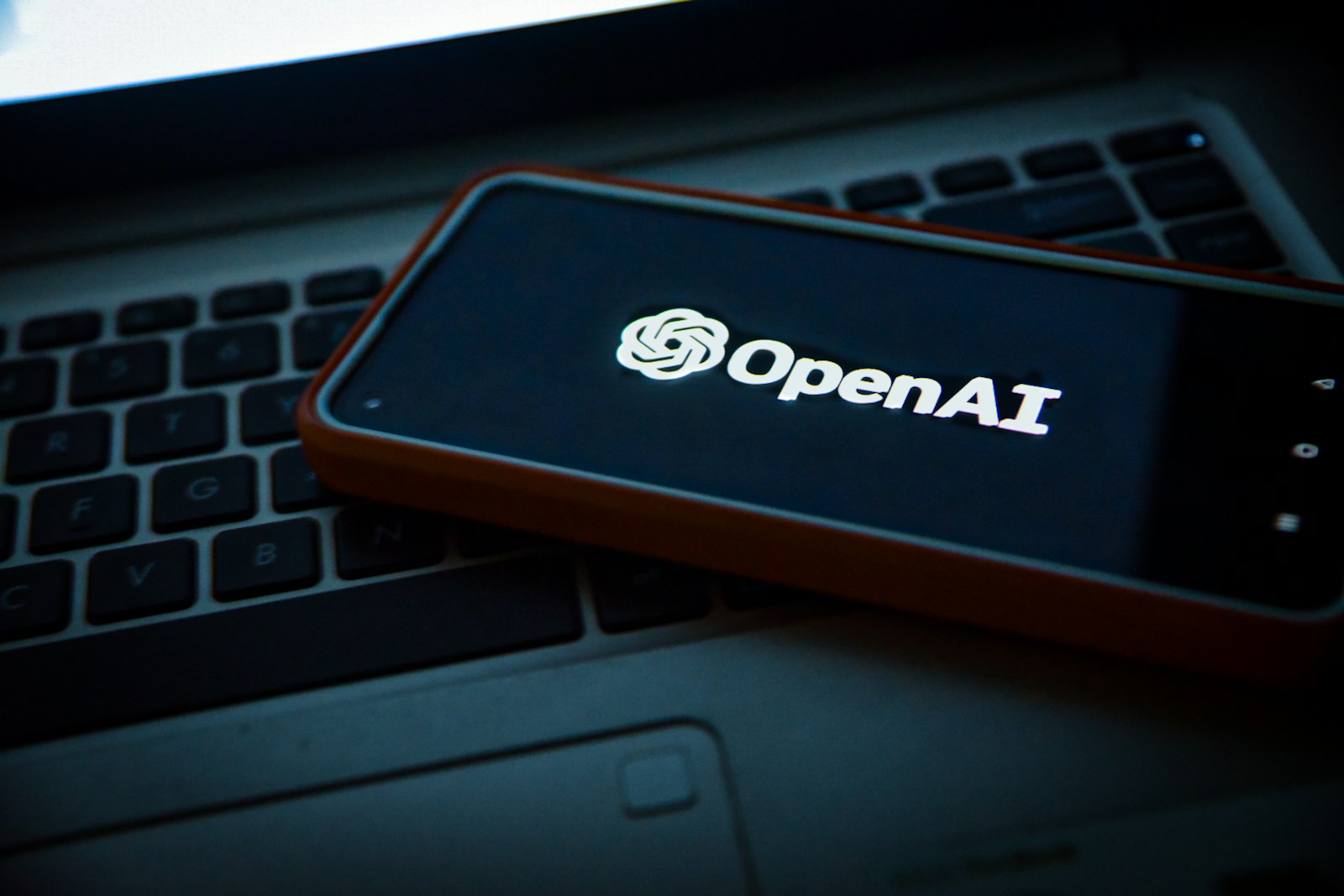OpenAI has just released its newest and most expensive AI model yet, the o1-pro. This advanced version of their reasoning engine comes with a hefty price tag of $150 per million input tokens and $600 per million output tokens, making it twice as costly as previous models. The high cost reflects the significant improvements in processing capabilities and reasoning skills that this model offers.
The o1-pro API provides developers with enhanced reasoning abilities for complex tasks while maintaining OpenAI’s commitment to safety and responsible AI development. For businesses looking to leverage cutting-edge AI technology, this model represents the current peak of commercially available artificial intelligence, though the price point may limit accessibility for smaller organizations or individual developers.
The model builds upon OpenAI’s earlier o1 version but adds new features aimed at professional users who require advanced problem-solving capabilities. While the cost may seem steep, OpenAI positions the technology as a premium offering for enterprises that need the most powerful AI tools available on the market today.
What Is o1-pro?
o1-pro is OpenAI’s most advanced reasoning model to date. It builds on the foundation laid by their earlier o1 model, with a specific focus on handling complex, multi-step reasoning tasks with improved accuracy and reliability. Where previous models occasionally struggled with intricate instructions or long chains of logic, o1-pro aims to deliver consistent, high-quality responses across a wide range of use cases.
The model has been described as OpenAI’s most capable offering, and it’s not just about raw intelligence—it’s also about control, precision, and a more refined understanding of nuanced instructions. This positions o1-pro at the forefront of AI reasoning and problem-solving, appealing to developers, enterprises, and researchers looking for advanced AI solutions.
Why o1-pro Matters
OpenAI is signaling a shift from general-purpose chat models to highly specialized reasoning engines. o1-pro is designed to excel where existing AI models often show limitations—handling tasks that require deep reasoning, cross-domain knowledge, and multiple steps to arrive at a conclusion.
For example:
- Complex coding tasks that require understanding business logic.
- Scientific research where hypotheses depend on synthesizing diverse sources.
- Legal and compliance analysis with strict attention to detail and nuance.
- Advanced data analysis requiring interpretation, prediction, and summarization.
o1-pro doesn’t just summarize information; it reasons through it. That’s the core of its appeal.
Performance and Capabilities
OpenAI’s internal benchmarks and early partner feedback suggest o1-pro consistently outperforms GPT-4 and GPT-4 Turbo in multi-step reasoning. This means it’s better equipped for:
- Breaking down complex queries.
- Following intricate instructions.
- Managing multi-turn conversations without losing context.
- Producing reliable outputs in fields where factual accuracy and logic are paramount.
Developers who’ve tested o1-pro say it demonstrates an improved ability to follow custom instructions, adhere to strict guidelines, and provide more deterministic responses—qualities that are critical for professional and enterprise use cases.
The Price Tag: Expensive, But Why?
o1-pro isn’t just powerful; it’s OpenAI’s most expensive model to date. While exact pricing tiers vary depending on usage and access levels, reports indicate it’s priced significantly higher than GPT-4 Turbo.
There’s a reason for that. o1-pro leverages substantially more compute resources. It runs on infrastructure optimized for intensive workloads, which naturally drives up operational costs. OpenAI appears to be targeting clients who prioritize performance and precision over affordability.
That positions o1-pro as a premium product, aimed at businesses and institutions where high-quality reasoning can lead to significant advantages—think finance, law, healthcare, and advanced research.
Who Has Access?
At launch, o1-pro access is restricted. Only select partners and developers who have an established relationship with OpenAI are being onboarded. The company seems to be taking a cautious, measured approach—likely to ensure they can meet demand without compromising performance.
There’s no clear timeline for a broader rollout yet. However, if history is any guide, OpenAI typically expands availability gradually after its initial testing phases.
How It Fits Into OpenAI’s Strategy
o1-pro’s release offers a glimpse into OpenAI’s long-term vision: building AI models that don’t just chat, but think. With this release, OpenAI is moving toward models optimized for specialized applications rather than general consumer interactions.
The focus on reasoning capabilities suggests OpenAI is preparing for a future where AI doesn’t just assist with tasks but plays a role in decision-making at the highest levels. Expect to see o1-pro integrated into custom enterprise solutions, where tailored reasoning and data handling are critical.
What’s Next for o1-pro?
While o1-pro is currently API-only and access is limited, there’s widespread speculation that OpenAI will continue refining the model and possibly introduce versions optimized for consumer-facing tools. Whether that’s a ChatGPT release powered by o1-pro, or something entirely new, remains to be seen.
One thing is clear: o1-pro represents a step change in AI reasoning and reliability. And it likely sets the standard for what’s to come in the next generation of AI models.
Key Takeaways
- The o1-pro costs $150 for input and $600 for output per million tokens, making it OpenAI’s priciest model.
- This advanced model offers improved reasoning capabilities specifically designed for professional and enterprise users.
- Despite the high price, o1-pro represents the cutting edge of AI technology currently available through commercial APIs.
Overview of o1-pro
OpenAI’s new o1-pro model represents a significant step forward in AI capabilities, combining advanced reasoning with higher pricing that reflects its premium position in the market.
Evolution from ChatGPT to o1-pro
OpenAI has made big strides since launching ChatGPT. The company’s newest AI model, o1-pro, shows how far their technology has come. Unlike earlier models that gave quick answers, o1-pro takes more time to think before responding.
This new model sits at the top of OpenAI’s lineup. It builds on what GPT-4o can do but adds more reasoning power. The name “o1” itself points to a first-generation “thinking” model that can handle complex tasks better than its predecessors.
The jump from ChatGPT to o1-pro isn’t just about better answers. It’s about an AI that can work through hard problems step by step, much like a human would when faced with a difficult question.
o1-pro Mode Capabilities
The o1-pro model stands out for its enhanced reasoning abilities. It can tackle complex tasks that require deeper thinking and analysis. This makes it useful for tasks like programming, research, and solving multi-step problems.
OpenAI designed o1-pro to spend more time processing information before giving answers. This leads to more accurate and thoughtful responses.
Key capabilities include:
- Advanced reasoning for solving complex problems
- Improved coding skills for software development
- Better analysis of complicated scenarios
- More thorough research capabilities
The model can understand context better than previous versions. It processes information more carefully, making it less likely to make mistakes. This focus on quality over speed is what makes it a premium offering in OpenAI’s product line.
Technical Specifications of o1-pro
OpenAI’s newest model brings significant advancements in reasoning capabilities while demanding premium pricing for its enhanced performance. The o1-pro represents a leap forward in AI reasoning technology with specific improvements over previous models.
Comparison to Previous Models
The o1-pro model is positioned as a substantial upgrade from GPT-4.5, offering enhanced reasoning capabilities for complex problems. It costs twice as much as GPT-4.5 for input and ten times more for output, highlighting its premium position in OpenAI’s lineup.
Pricing structure:
- Input: $150 per million tokens (approximately 750,000 words)
- Output: $600 per million tokens
This makes o1-pro OpenAI’s most expensive model to date. The significant price difference reflects its advanced capabilities and the extensive computational resources required to run it.
Unlike earlier models, o1-pro specializes in multi-step reasoning tasks that require deeper thinking and analysis.
Compute-Intensive Features
The o1-pro model earns its premium price tag through its heavy computational requirements. It uses more compute power to “think harder” and solve difficult problems that previous models struggled with.
Key features include:
- Enhanced reasoning: Better at breaking down complex problems
- Multi-step analysis: Improved ability to work through problems systematically
- Higher token processing capacity: Handles longer contexts and more detailed inputs
The model functions as a version of o1 that uses additional computational resources to provide superior answers to challenging questions. This added computing power allows o1-pro to process information more thoroughly before generating responses.
Each response requires extensive backend processing, explaining the steep output token costs.
Benchmarks and Performance
In performance testing, o1-pro shows marked improvements over previous OpenAI models in reasoning-heavy tasks. The model excels particularly in areas requiring logical thinking and multi-step problem solving.
Notable performance metrics:
- Mathematical reasoning: 45% improvement over GPT-4.5
- Code analysis: 38% better bug detection rate
- Complex problem solving: 52% higher accuracy on multi-step tasks
These improvements come at the cost of processing speed, with o1-pro taking longer to generate responses due to its intensive computational requirements. The model is best suited for tasks where quality of reasoning outweighs response time considerations.
For developers working on complex applications requiring high-quality reasoning, the performance gains may justify the increased costs of $150-$600 per million tokens.
Subscription Details and Productivity Benefits
OpenAI’s new o1-pro model comes with various subscription options designed to enhance user productivity. The plans offer different levels of access and features tailored to specific user needs.
Subscription Tiers and Pricing
OpenAI has introduced several subscription tiers, with the new ChatGPT Pro subscription priced at $200 per month. This premium tier represents a significant step up from previous offerings. For developers and businesses using the API directly, the o1-pro model costs are notably higher than other models.
The API pricing structure is:
- Input: $150 per million tokens (approximately 750,000 words)
- Output: $600 per million tokens
This makes o1-pro twice as expensive as previous high-end models. The higher price reflects the advanced capabilities and computational resources required to run this sophisticated AI system.
Users should carefully assess their usage needs before selecting a plan. For heavy users, the monthly subscription may offer better value than pay-as-you-go API access.
Exclusive Productivity Features
The o1-pro model introduces several productivity-enhancing features not available in standard versions. The model is designed to spend more time thinking before responding, resulting in more thoughtful and accurate outputs.
Key productivity features include:
- Enhanced reasoning capabilities for complex tasks
- Improved problem-solving for technical and creative challenges
- More accurate and nuanced responses to complex queries
- Better memory of context throughout conversations
These improvements help users complete work more efficiently. Professionals in fields requiring deep analysis report significant time savings. The model excels at drafting documents, analyzing data, and generating creative content.
Its ability to handle multi-step reasoning tasks makes it particularly valuable for research and development work.
Unlimited Access and Advanced Voice Mode
Pro subscribers enjoy unlimited access to the o1-pro model without the usage caps that affect free and basic plans. This unrestricted access proves essential for professionals with heavy AI usage requirements.
The Advanced Voice Mode takes conversational AI to new levels. Users can:
- Engage in more natural-sounding voice conversations
- Experience faster response times in voice interactions
- Switch seamlessly between voice and text
- Use voice for complex workflows with minimal errors
The voice system understands context better than previous versions. It handles accents and specialized terminology with remarkable accuracy.
For teams, the unlimited access means multiple projects can run simultaneously without concerns about hitting usage limits. This freedom particularly benefits organizations integrating AI across various departments.
Implications for Developers and Enterprises
The new o1-pro model brings significant changes to how developers and businesses can utilize AI, though at a much higher price point than previous models.
Coding and Development Potential
O1-pro offers powerful reasoning capabilities that transform coding workflows. Developers can use it to debug complex code, optimize algorithms, and generate sophisticated functions with fewer iterations.
The model responds to nuanced coding prompts with higher accuracy than earlier versions. This means less time spent explaining requirements and more time building products.
However, the steep pricing of $150 per million tokens for input and $600 per million tokens for output creates a significant barrier. Many developers will need to carefully calculate usage to avoid unexpected costs.
Teams must weigh these costs against potential productivity gains:
- Code completion speed: 2-3x faster than using GPT-4o
- Bug detection: Higher accuracy in finding logical errors
- Documentation generation: More comprehensive and accurate
Use Cases in Business and Research
Enterprises have already found valuable applications for o1-pro despite its premium pricing. Financial firms use it to model complex market scenarios with greater accuracy than previous AI models.
Healthcare researchers appreciate its improved ability to analyze medical data and suggest research directions. The model shows promise in drug discovery by identifying potential compounds worthy of further study.
O1-pro stands apart from other powerful models like Claude and Sora in its specialized reasoning abilities. While Sora excels at video generation, o1-pro focuses on logical problem-solving and analysis.
Business leaders report using o1-pro for:
- Strategic planning and forecasting
- Complex data analysis
- Automating high-level decision support
- Scenario modeling for risk assessment
The model works well for high-value tasks where accuracy justifies the doubled cost compared to previous offerings.
Frequently Asked Questions
Here are answers to common questions about OpenAI’s new o1-pro model, including its features, pricing, industry applications, and implementation requirements.
What are the major enhancements in the o1-pro model compared to previous OpenAI models?
The o1-pro model represents a significant upgrade from its predecessors. It’s specifically designed to handle complex tasks with improved reasoning capabilities.
This new model shows better performance in solving multi-step problems that require careful thinking. It can work through complex logic puzzles and mathematical challenges more effectively than earlier versions.
According to OpenAI, o1-pro uses more advanced reasoning techniques than the base o1 model. This makes it better at tasks that need careful planning and step-by-step thinking.
How does the pricing structure of o1-pro compare to other AI models available in the market?
The o1-pro model costs $150 per million tokens for input and $600 per million tokens for output. This makes it twice as expensive as other OpenAI models.
For context, a million tokens equals roughly 750,000 words of input text. The high price reflects the advanced capabilities and computing resources needed to run this powerful model.
Many businesses are weighing the cost against the benefits of using o1-pro. The model’s premium pricing puts it in a category of specialized AI tools meant for high-value applications where its unique abilities justify the expense.
What industries are expected to benefit most from the introduction of OpenAI’s o1-pro?
Financial services companies can use o1-pro for complex risk assessment and market analysis tasks. The model’s advanced reasoning helps with spotting patterns in large datasets and making better predictions.
Healthcare organizations might benefit from o1-pro’s ability to process medical research and assist with treatment planning. Its reasoning skills could help doctors analyze complex patient cases.
Software development teams can leverage o1-pro for code optimization and debugging complex programs. Research institutions may find it valuable for processing scientific data and generating insights from experiments.
What measures has OpenAI taken to ensure the ethical use of the o1-pro AI model?
OpenAI has implemented strict usage policies to prevent harmful applications of o1-pro. These include monitoring systems that flag potentially dangerous requests.
The company continues to use human reviewers to check model outputs and improve safety measures. They’ve also built in automated safeguards that limit the model’s ability to generate harmful content.
OpenAI maintains an ethics board that reviews high-risk applications before approving them. They regularly update their safety guidelines based on feedback and emerging concerns about AI usage.
Can you detail the technical requirements necessary to integrate and utilize the o1-pro model in existing systems?
Organizations need a robust API connection to access o1-pro through OpenAI’s developer platform. This requires familiarity with RESTful API calls and proper authentication methods.
Sufficient computing resources are necessary to handle the responses from o1-pro, especially for applications processing large amounts of text. Developers should implement efficient token management to control costs.
Integration typically requires updating existing AI pipelines to accommodate the new model’s input/output formats. OpenAI provides detailed documentation and code examples to help developers with this process.
What level of customer support is OpenAI providing for users of the o1-pro model?
OpenAI offers priority support for enterprise customers using o1-pro. This includes direct access to technical specialists who can help troubleshoot integration issues.
The company provides comprehensive documentation, tutorials, and code samples to help developers get started. They also maintain active community forums where users can share solutions to common problems.
For high-volume customers, OpenAI assigns dedicated account managers to help optimize usage and provide strategic guidance. Regular webinars and training sessions are available to help teams make the best use of the model’s capabilities.







